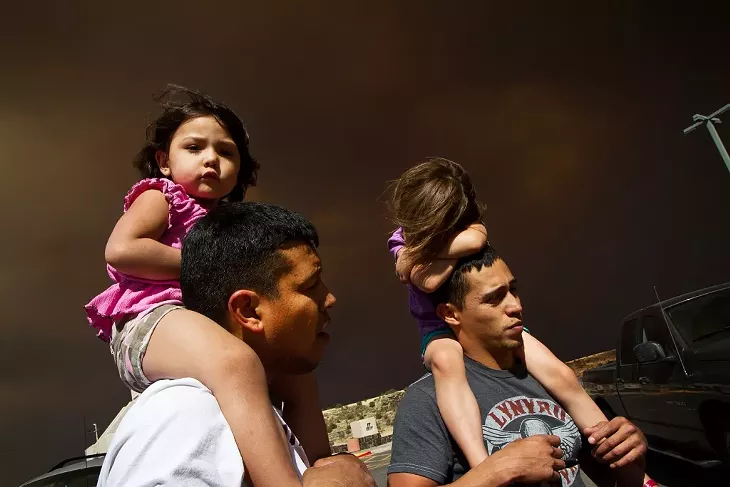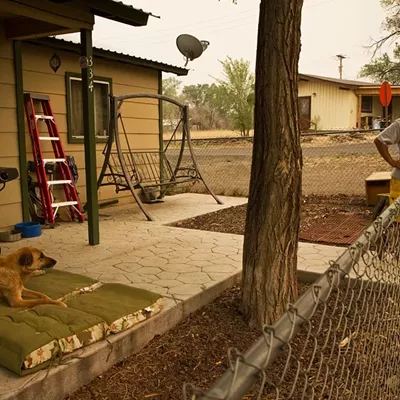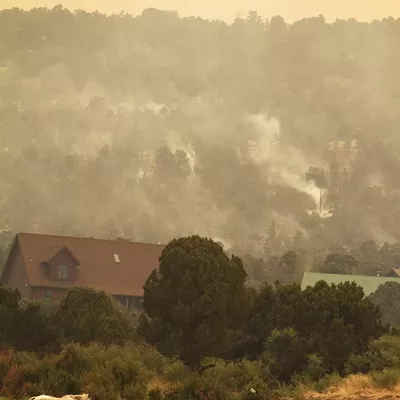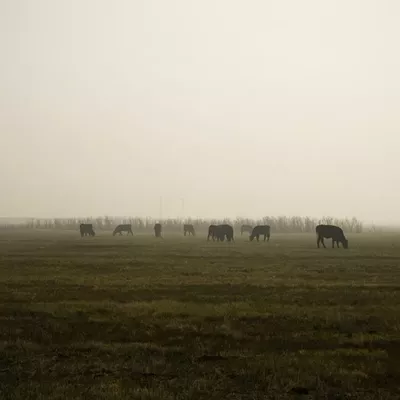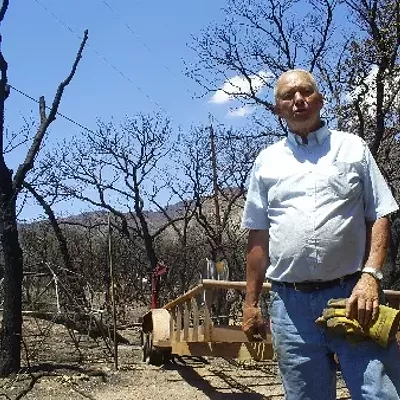Rather than charred, tumbling timbers, Dana Davis' backdrop is an alluring assemblage of daypacks, hiking boots and camp stoves.
But this summer's conflagrations are hitting home nonetheless, as she warily monitors daily sales at her two Summit Hut stores in Tucson.
The huge fires—one southeast of Tucson, another in eastern Arizona in the White Mountains—and smaller ones near Nogales and Sierra Vista have made it tougher for outdoors aficionados to plan trips, which could translate into less gear purchased at Summit Hut. Adding to Davis' concern is the current closure of the entire Coronado National Forest, which began on June 9.
"I guess we're just going to wait and see," she says of the closure's impact. "Years ago, there was a slight downturn in business when there were lots of fires (near) Tucson. It was something that we kept our eye on. But I don't remember it being catastrophic."
On the other hand, this summer's calamity can be an opportunity for fresh ideas, she says. "Our customers and staff are all a little disappointed, because summertime is such a great time to go hiking in our Tucson area. But I do think that a lot of our customers understand the importance of protecting our forests and why the closures are happening. We're just going to have to get a little more creative in our summer hiking schedule."
That innovation includes journeying to areas that are not ablaze, such as forest areas in New Mexico, Utah and California. It also includes new approaches to Summit Hut's summer merchandising. For example, the longtime retailer's popular summer sales will now be spiked with special events such as gourmet nights.
"We plan on having different folks battle it out with their backcountry recipes," Davis says, "and other kinds of fun things that will keep you out of the heat, but still get you thinking about the outdoors, or the coolest and latest products, or a chance to hear about places to go."
On a statewide level, tourism officials are also scrambling to reroute people who hope to relax in nature. "We have visitors calling, and they want more information about what's going on up in (the White Mountains) area," says Kiva Couchon, communications manager for the Arizona Office of Tourism. "If they had travel plans that they need to cancel, and want to find an alternative, we are there to help them find that alternative."
But as the fires grow, those options are steadily shrinking. The Wallow Fire in eastern Arizona was approaching a half-million acres burned as of our press deadline, and was declared the largest fire in recorded Arizona history. The Horseshoe Two Fire has burned 150,000 acres in the Chiricahua Mountains near Willcox; and the Murphy Fire has consumed almost 70,000 acres in the Pajarita Wilderness area south of Tucson. The cost of fighting just the two largest fires is already estimated at nearly $30 million.
But the true impact of those flames—particularly for White Mountains communities such as Springerville and Eager—has yet to be tallied, says Couchon. "There's no way that this cannot impact what's going on up there. But we have not heard anything as of yet."
And like the townspeople in those hard-hit areas, state officials know what's at stake. Apache, Graham and Greenlee counties—where fires are either raging, or forests have been closed—receive approximately $160 million in combined tourism revenues each year. In Pima County, where popular parts of the Coronado National Forest—including Sabino Canyon, Mount Lemmon and Madera Canyon—are now closed, tourism accounts for more than $1 billion in annual revenues.
Even before the final numbers come in, however, questions are being raised about whether these costly conflagrations could have been avoided. Decades of what critics call Forest Service mismanagement—from over-grazing and excess logging of mature, potentially fire-resistant trees, to fire suppression that created fuel buildups—have all played a role. That's coupled with a thinning process, in the aftermath of 2002's catastrophic Rodeo-Chedeski Fire, that critics say is proceeding at a snail's pace.
"Historic forest policy has certainly had a large impact," says Todd Schulke, forest policy analyst with the Center for Biological Diversity. "Past logging practices and, to some degree, fire suppression and grazing practices have led to the forest condition that we're in.
"Back in the heyday of industrial logging," Schulke says, "the practice was to take the big trees and leave the little ones. That's part of the reason we've ended up with such a high density of small-diameter trees."
Those smaller trees are a huge detriment in fire situations, he says. "They've become so thick that they aren't healthy. There are a lot of dead branches, and they become what's called ladder fuels. When a fire starts on the ground, it's easier to light those smaller trees. Then it's easier to carry the fire up into the crowns of the big trees."
While fires are a natural occurrence in Southwest forests, Schulke says they historically occurred among big, amply spaced trees with thick, fire-resistant bark. "We actually had fires that were quite a bit larger than what we're seeing now. But they were ground fires that burned through the grass, and didn't take out whole forest areas."
Regardless of what's to blame, Tucsonans such as Jeff Babson, owner of Sky Island Tours, are relegated to a potentially costly guessing-game. Babson's most-popular summertime bird- and butterfly-watching tours take place in now-closed areas of the Coronado National Forest, including Madera Canyon. "It's definitely going to have an impact," he says. "... It's the closest area to Tucson where a lot of those (species) can be found, and in the Top 10 locations nationally for birders."
While he supports the Coronado's protective closure, it also means he'll have to steer clients to non-national-forest destinations such as the San Pedro Riparian National Conservation Area near Sierra Vista. "All of us who do this are going to have to be a little flexible right now," Babson says, "and hopefully, it's just for a few weeks that this is an issue."
Back at Summit Hut, Dana Davis agrees. "I guess I have a positive attitude toward it," she says, gazing around her sprawling store. "I feel optimistic that the folks of Tucson want to get outside, and that they're still going to find ways to do it. While there may be a slight adjustment in business, I feel that folks will still be going somewhere."
She smiles. "And even if they aren't able to get out of town, they can come in here and live vicariously through the products and the air conditioning."

